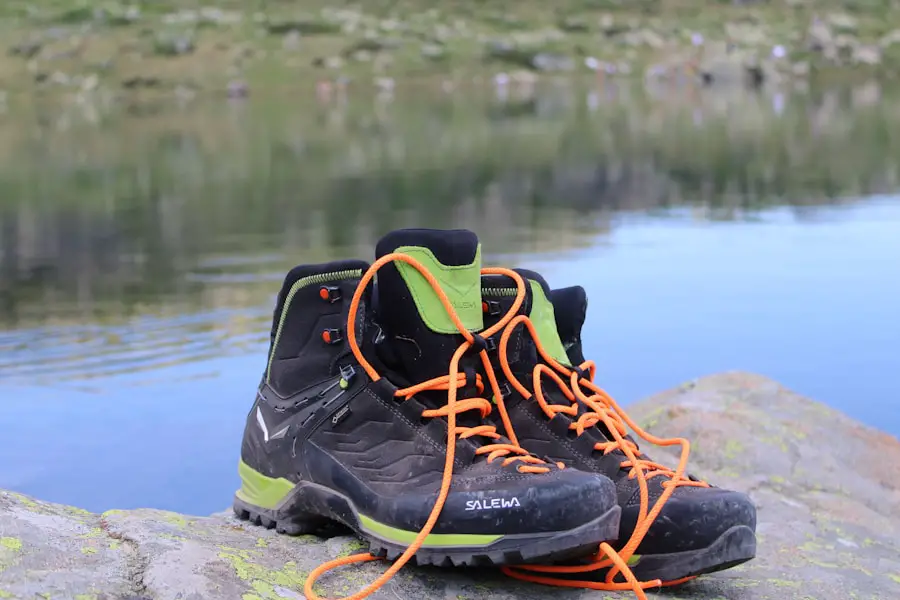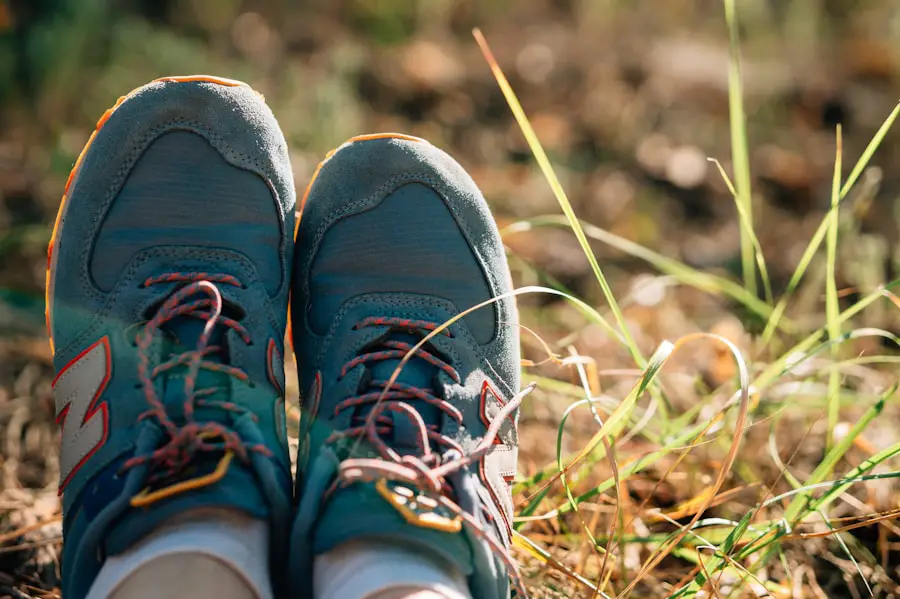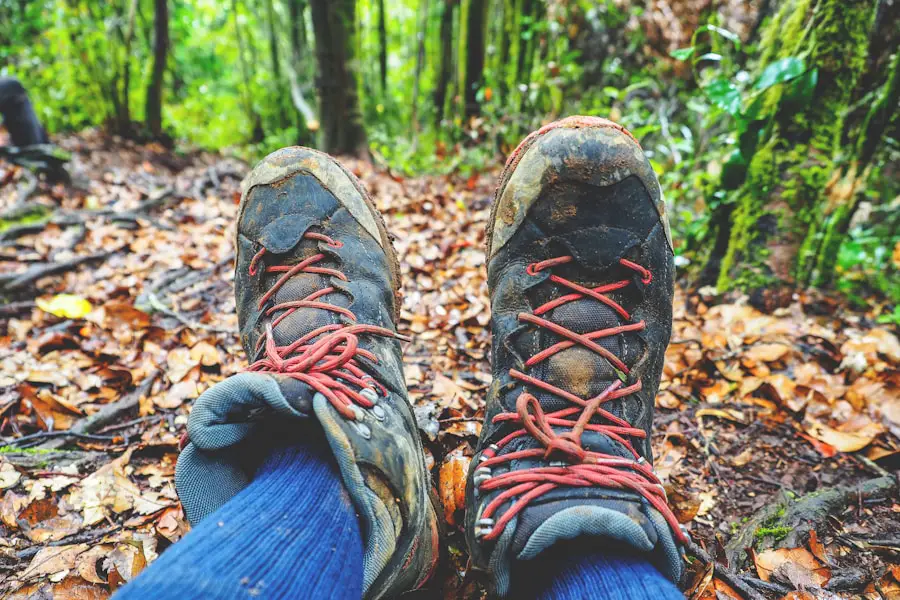Properly lacing hiking shoes is a fundamental aspect of outdoor preparation that is often overlooked by both novice and experienced hikers. The way a shoe is laced can significantly affect comfort, stability, and overall performance on the trail. When shoes are laced correctly, they provide a snug fit that helps to secure the foot in place, reducing the risk of blisters and other foot injuries.
A well-laced shoe can also enhance the efficiency of each step, allowing for better energy transfer and reducing fatigue during long hikes. Moreover, the importance of lacing extends beyond mere comfort; it plays a crucial role in ensuring safety while navigating various terrains. Hiking often involves traversing uneven surfaces, steep inclines, and rocky paths, all of which can put significant strain on the feet and ankles.
Proper lacing techniques can help to stabilize the foot within the shoe, preventing excessive movement that could lead to sprains or falls. In essence, the way one laces their hiking shoes can be the difference between an enjoyable adventure and a painful experience.
Key Takeaways
- Properly lacing hiking shoes is important for comfort, support, and injury prevention.
- Different lacing techniques should be used for different foot types to ensure a proper fit.
- Proper lacing can help prevent blisters and hotspots during hiking.
- Customizing lacing can maximize comfort and support for individual needs.
- Lacing plays a crucial role in maintaining ankle stability during hiking.
Different Lacing Techniques for Different Foot Types
Understanding that foot anatomy varies from person to person is essential when it comes to lacing hiking shoes. Individuals with high arches may require a different lacing technique compared to those with flat feet. For instance, hikers with high arches often benefit from a looser lacing pattern around the arch area to prevent excessive pressure that could lead to discomfort.
Conversely, those with flat feet might find that a tighter lacing technique provides the necessary support to keep their foot from rolling inward. Another consideration is the width of the foot. Wider feet may necessitate a more relaxed lacing approach to avoid pinching or constricting the foot, while narrower feet might require a tighter fit to ensure that the shoe does not slip during movement.
Additionally, some hikers may have specific issues such as bunions or hammertoes that can influence their lacing preferences. By tailoring lacing techniques to individual foot types, hikers can achieve a more personalized fit that enhances both comfort and performance on the trail.
Tips for Preventing Blisters and Hotspots with Proper Lacing

Blisters and hotspots are common nuisances for hikers, often resulting from friction between the foot and shoe. Proper lacing can be a powerful tool in preventing these painful occurrences. One effective strategy is to ensure that the laces are tightened evenly across the entire shoe.
Uneven tension can create pressure points that lead to friction and ultimately blisters.
It’s advisable to start lacing from the bottom and work your way up, adjusting tension as needed to create a uniform fit. Another useful tip is to utilize specific lacing techniques designed to alleviate pressure on sensitive areas of the foot.For example, using a “skip lacing” method—where one or two eyelets are skipped in areas where pressure tends to build—can help reduce friction on vulnerable spots. Additionally, incorporating lace locks at the top of the shoe can secure the ankle without overly constricting the forefoot, allowing for better blood circulation and reducing the likelihood of hotspots forming during long hikes.
How to Customize Lacing for Maximum Comfort and Support
| Lacing Technique | Comfort Level | Support Level |
|---|---|---|
| Standard Criss-Cross | Medium | Medium |
| Heel Lock | High | High |
| Window Lacing | Low | Medium |
| Loop Lacing | High | Low |
Customization is key when it comes to achieving maximum comfort and support through lacing techniques. Hikers should experiment with different patterns and tensions to find what works best for their unique foot shape and hiking style. For instance, some may prefer a traditional crisscross pattern, while others might find that a diagonal lacing technique provides better support for their arches or heels.
In addition to experimenting with patterns, hikers can also adjust the tension of their laces at various points along the shoe. For example, loosening the laces around the toe box while keeping them snug around the midfoot can allow for greater toe movement and comfort during descents. Conversely, tightening the laces around the ankle can provide additional support when navigating rocky terrain.
This level of customization not only enhances comfort but also allows hikers to adapt their footwear to different conditions encountered on the trail.
The Role of Lacing in Maintaining Ankle Stability
Ankle stability is paramount when hiking, especially on uneven or challenging terrain. The way hiking shoes are laced can significantly influence how well they support the ankle during movement. A secure lacing technique helps to keep the heel locked in place, which is essential for maintaining proper alignment and preventing ankle rolls.
When the heel moves excessively within the shoe, it increases the risk of sprains and other injuries. To enhance ankle stability through lacing, hikers should focus on securing the top two or three eyelets tightly while ensuring that the lower sections remain comfortably snug but not overly tight. This approach allows for adequate ankle support without sacrificing comfort or circulation.
Additionally, some hikers may benefit from using specialized lacing techniques such as heel lock lacing, which creates a more secure fit around the ankle by utilizing additional loops at the top of the shoe.
Lacing Techniques for Enhancing Performance on Uphill and Downhill Terrain

The demands of uphill and downhill hiking require different considerations when it comes to lacing techniques. When ascending steep inclines, hikers often benefit from a tighter fit around the midfoot and heel to prevent their foot from sliding forward within the shoe. This can be achieved by pulling the laces tighter in these areas while keeping them slightly looser around the toe box to allow for natural toe splay.
Conversely, when descending, it’s crucial to ensure that there is enough room in the toe box to prevent toes from jamming against the front of the shoe. Loosening the laces slightly in this area can help mitigate this issue while still maintaining a secure fit around the ankle and midfoot. Some hikers may also find it beneficial to use a “downhill” lacing technique that incorporates additional loops or knots at strategic points to provide extra security during descents.
The Impact of Lacing on Overall Foot Health and Injury Prevention
The impact of proper lacing extends beyond immediate comfort; it plays a vital role in overall foot health and injury prevention. Poorly laced shoes can lead to various issues such as plantar fasciitis, metatarsalgia, and other overuse injuries that stem from improper alignment and support. By ensuring that shoes are laced correctly, hikers can promote better biomechanics during movement, reducing strain on muscles and ligaments.
Furthermore, proper lacing can help distribute pressure evenly across the foot, minimizing hotspots and reducing the likelihood of developing blisters or calluses. This attention to detail not only enhances comfort during hikes but also contributes to long-term foot health by preventing chronic issues that could arise from repetitive stress or improper footwear fit.
Expert Advice on Mastering the Art of Lacing Hiking Shoes
To master the art of lacing hiking shoes effectively, it’s essential to seek out expert advice and practical tips from seasoned hikers and footwear specialists. One key piece of advice is to take time before hitting the trail to experiment with different lacing techniques at home. This practice allows hikers to identify what feels best for their feet without the pressure of being on an actual hike.
Additionally, consulting with professionals at outdoor gear shops can provide valuable insights into specific products designed for various foot types and hiking conditions. Many shops offer fitting services where experts can assess foot shape and recommend appropriate lacing techniques tailored to individual needs. Engaging with online communities or forums dedicated to hiking can also yield helpful tips and shared experiences from fellow enthusiasts who have navigated similar challenges.
Ultimately, mastering proper lacing techniques requires patience and experimentation. By understanding their own feet and how different lacing methods affect comfort and performance, hikers can significantly enhance their outdoor experiences while minimizing discomfort and injury risks associated with poorly fitted footwear.
If you’re planning a hiking trip, it’s important to make sure your shoes are properly laced up for maximum comfort and support. One helpful article on TakeTravelInfo discusses the best techniques for lacing up hiking shoes to prevent blisters and ensure a secure fit. Check out the article here for some useful tips before hitting the trails.
FAQs
What are the benefits of lacing up hiking shoes properly?
Lacing up hiking shoes properly can provide better support, stability, and comfort for your feet during long hikes. It can also help prevent blisters and hot spots by ensuring a secure fit.
What is the best lacing technique for hiking shoes?
The best lacing technique for hiking shoes is the “heel lock” or “lace lock” method, which involves creating a secure and snug fit around the heel to prevent slippage and improve overall stability.
How do you lace up hiking shoes using the heel lock method?
To lace up hiking shoes using the heel lock method, start by threading the laces through the bottom eyelets as usual. Then, instead of crossing the laces over the top, thread each lace through the top eyelet on the opposite side. Finally, tie the laces as you normally would, creating a secure and snug fit around the heel.
Are there other lacing techniques for hiking shoes?
Yes, there are several other lacing techniques for hiking shoes, including the surgeon’s knot, window lacing, and straight lacing. Each technique offers different benefits, such as reducing pressure points or providing extra ankle support.
How often should I re-lace my hiking shoes?
It’s a good idea to re-lace your hiking shoes whenever you notice the laces becoming worn or frayed. Additionally, if you’re experiencing discomfort or slippage while hiking, re-lacing your shoes using a different technique may help improve the fit and comfort.
